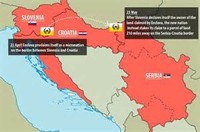Facts about Serbia

Serbia’s exports totalled $6.428-billion (excluding Kosovo and Montenegro) in 2006.

On June 5, 2006, the National Assembly of Serbia declared Serbia the legal successor to the state union.

There a resurgence in art in the nineteenth century as Serbia gradually regained its autonomy.

Stevan Mokranjac, a composer and musicologist collected folk songs, and was the director of the first Serbian School of Music and one of the founders of the Union of Singing Societies.

Up to one-third of Serbia proper is in broad-leaved forest, mostly oak and beech.

Slobodan Miloљevic, a former business official, who from 1986 rose to power through the League of Communists of Serbia, became president of the Serbian Republic in 1989.

On October 5, 2000 after demonstrations and fighting with police, elections were held and he lost to the candidate of the Democratic Opposition of Serbia Vojislav Koљtunica.

The Byzantine Empire, the Serb Orthodox Church, and Serbian peasant culture have influenced Serbian arts, crafts and music.

Population statistics, from 2005, showed: Serbia (total) 9,396,411, Vojvodina 2,116,725, Central Serbia 5,479,686, and Kosovo 1,800,000.
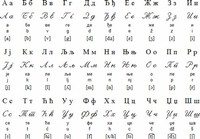
Two alphabets are used to write the Serbian language: a Serbian Cyrillic variation on the Cyrillic alphabet, and a variation on the Latin alphabet.

Most of Serbia was under Ottoman occupation between 1459 and 1804, despite three Austrian invasions and numerous rebellions (such as the Banat Uprising).

Bosniaks are the largest Muslim community in Serbia (excluding Kosovo) at about (2 percent), followed by Albanians (1 percent), Turks, and Arabs.

The census was not conducted in Serbia's southern province of Kosovo, which was under administration by the United Nations.

The gusle, a one-stringed instrument, was invented by Serbian peasants during this time.

Serbia is known for textiles made of wool, flax, and hemp, which are woven into carpets of complex geometric patterns.

The Ottoman conquest of Serbia in 1459 meant that since the church was not recognised and the nobility was persecuted, the main source of patronage for architects and artists dried up.

Serbia backed local Serbs in civil wars hoping to retain some parts of the republics within Yugoslavia.

Refugees and internally displaced persons in Serbia form between 7 percent and 7.5 percent of its population.

In World War I, Serbia had 1,264,000 casualties—28 percent of its total population, and 58 percent of its male population.

The Contact Group has postponed the completing of the status process until after Serbian parliamentary elections in January 2007.

Serbian epic poetry was a central part of medieval Serbian literature based on historic events such as the Battle of Kosovo.

Serbia covers a total area of 34,116 square miles (88,361kmІ), which places it at 113th largest place in the world, or slightly larger than South Carolina in the United States.

Serb militias carved out several autonomous regions in Bosnia, which were consolidated in March 1992 into the Serbian Republic of Bosnia and Herzegovina.
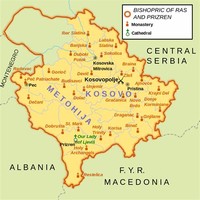
The complexity of Serbia and Kosovo's political and legal relationships has created uncertainty over property rights and hindered the privatization of state-owned assets in Kosovo.
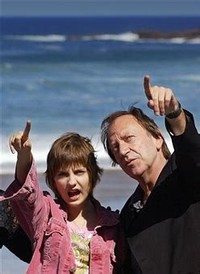
In 2005, San zimske no?i (A Midwinter Night's Dream ) directed by Goran Paskaljevi?] caused controversy over its criticism of Serbia's role in the Yugoslav wars in the 1990s.

Serbia has a multi-party system, with numerous political parties in which no one party often has a chance of gaining power alone.

In 1848, Serbs in the northern part of present-day Serbia, which was ruled by the Austrian Empire, established an autonomous region known as the Serbian Vojvodina.

A central figure in the church is Saint Sava, the brother of Stefan Nemanja, Serbia's first king.

Socialist Yugoslavia was established as a federal state comprising six republics: Serbia, Croatia, Slovenia, Bosnia and Herzegovina, Macedonia and Montenegro and two autonomous regions within Serbia—Vojvodina and Kosovo and Metohija.

The northern Serbian territories were conquered in 1459 following the siege of the "temporary" capital Smederevo.

After the capture of Constantinople in 1204, many Greek artists fled to Serbia.

Serbia had 12 films produced before the start of World War II—the most notable was Mihail Popovic's The Battle of Kosovo in 1939.

The Ekavian variant of the Shtokavian dialect is spoken mostly in Serbia and Ijekavian in Bosnia and Herzegovina, Montenegro, south-western Serbia, and Croatia.

During the 1960s, Serbian artists, led by Petar Lubarda and Milo Milunovi?, started to break free from the constraints of socialist realism.
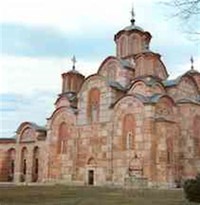
The most distinctive piece of medieval Serbian architecture was the Studenica monastery founded by Stefan Nemanja, the founder of medieval Serbia.

Under Miloљevic's leadership, Serbia led various military campaigns to unite ethnic Serbs in neighboring republics into a "Greater Serbia."

In all those camps, some 90 percent of the Serbian Jewish population perished.
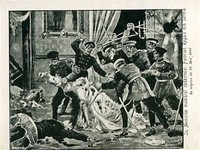
From 1815 to 1903, the Serbian state was ruled by the House of Obrenovi?, except from 1842 to 1858, when Serbia was ruled by Prince Aleksandar Kara?or?evi?.

Industry accounts for about 50 percent of Serbia's gross domestic product (GDP) and involves the fabrication of machines, electronics, and consumer goods.
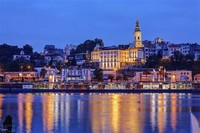
Serbia has a rich diversity of wild animals, including deer, and bears.

Other languages spoken in Serbia include Romanian, Hungarian, Slovak, Ukrainian, and Croatian, all of which are official languages in Vojvodina.

Following autonomy and eventual independence in the nineteenth century, there was a resurgence of Serbian culture.

Serbian culture is male-dominated—men head the household, while women are expected to cook, clean, and take care of other domestic tasks.
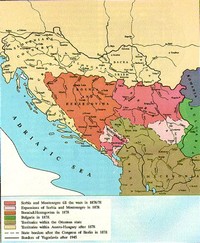
In 1876, Montenegro, Serbia, and Bosnia and Herzegovina declared war against the Ottoman Empire and proclaimed their unification.
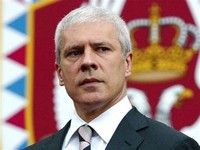
Boris Tadic has been the president of Serbia since July 2004, while Fatmir Sejdiu has been the Kosovo president since February 2006.

According to the 2002 Census, 82 percent of the population of Serbia (excluding Kosovo) or were overwhelmingly adherents of the Serbian Orthodox Church.

During the 1980s the republics pursued significantly different economic policies, with Slovenia and Croatia allowing significant market-based reforms, while Serbia kept to its existing program of state ownership.

Sporadic attacks on police escalated by 1998 to a substantial armed uprising, which provoked a Serbian attack that resulted in massacres and massive expulsions of ethnic Albanians living in Kosovo.

The Serbian Armed Forces comprise Land Forces Command (which includes the Serbian naval force, consisting of a river flotilla on the Danube), Joint Operations Command, and Air and Air Defense Forces Command.
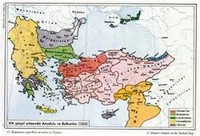
The Serbian Empire disintegrated into rival clans, and were defeated by the Turks in 1371 at the Battle of Chernomen, and in 1389 at the historic Battle of Kosovo.

The reigning Serbian monarch signed a treaty with Hitler (as did Bulgaria, Romania, and Hungary).
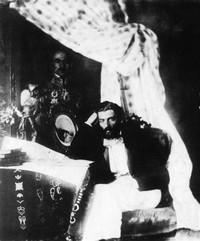
Anastas Jovanovi? was a pioneering photographer in Serbia, taking the photos of many leading citizens.

Vlastimir created the Serb state around 850, centered on an area in southern Serbia known as Raљka.

Serbia's terrain ranges from rich, fertile plains of the northern Vojvodina region, limestone ranges and basins in the east, and ancient mountains and hills in the southeast.

Stories, such as of Maid of Kosovo, who helped the wounded and dying on the battlefield, have become symbols of Serbian nationhood.

Other notable dishes include koljivo, boiled wheat which is used in religious rituals, Serbian salad, sarma (stuffed cabbage), podvarak (roast meat with sauerkraut) and moussaka.

The Carpathian Mountains and the Balkan Mountains stretch in north-south direction in the eastern Serbia, west of the Morava valley.

That kingdom accepted the supremacy of Constantinople, the start of an on-going link between the Serbian people and Orthodox Christianity.

Serbia is bordered by Hungary on the north, Romania and Bulgaria on the east, Albania and Republic of Macedonia on the south, and Montenegro, Croatia and Bosnia and Herzegovina on the west.

Before World War II, Serbia had a large peasant class, a tiny middle class, and a small upper class comprising government workers, professionals, merchants, and artisans.

Slavs settled the Balkans, and tribes known as the Serbs settled inland of the Dalmatian coast in an area extending from eastern Herzegovina, across northern Montenegro, and into southeastern Serbia.

From 2003 to 2006, Serbia was part of the State Union of Serbia and Montenegro, into which the Federal Republic of Yugoslavia had been transformed.

A Republic of the Serbian Krajina was formed along Croatia’s border with Bosnia and adjoining the Vojvodina.

The Serbian Army won several major victories against Austria-Hungary at the beginning of World War I, but it was overpowered by the joint forces of the German Empire, Austria-Hungary and Bulgaria in 1915.

Islam has a strong following in south Serbia - the Raska region, several municipalities in the south-east, and especially in Kosovo.

The Illyrians were finally subdued in 9 C.E., and their land became the province of Illyricum, while eastern Serbia was conquered in 29 B.C.E.

The unicameral Serbian national assembly has 250 members elected by direct vote for a four-year term.

Serbia, officially the Republic of Serbia is a landlocked country in central and south-eastern Europe, covering the southern part of the Pannonian Plain and the central part of the Balkan Peninsula.

Serbia grows about one-third of the world's raspberries and is the leading frozen fruit exporter.

Art in Serbia is most visible in the numerous religious buildings throughout the country.

The politics of Serbia take place in a framework of a parliamentary representative democratic republic, whereby the prime minister is the head of government, and of a pluriform multi-party system.
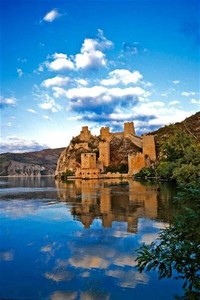
Serbia is famous for its huge, beautiful churches and monasteries located in the big cities, and scattered throughout the nation.

The Serbian Orthodox Church was founded in 1219, and its rise was tied to the rise of the Serbian state.

Serbia has produced a number of notable players who have competed for the top football clubs of Europe, and Crvena Zvezda Beograd (Red Star Belgrade) is one of the sport's legendary teams.

A referendum to determine whether or not to end the union with Serbia on May 21, 2006, resulted in independence.

Pre-human occupation in the Serbia region dates back 35,000 years, although dense Neolithic settlement dates from about 7000 B.C.E.

Other cities in Serbia proper with populations surpassing the 100,000 mark include Novi Sad, Niљ, Kragujevac, Leskovac, Subotica, Zrenjanin, Kruљevac, Pan?evo, Kraljevo, ?a?ak, and Smederevo.

Serbia was set up as another puppet state under Serbian army general Milan Nedi?.

Serbia has no lakes other than Lake Palic in the Vojvodina, with a surface area of less than two square miles (five square kilometers).

The First Serbian Uprising of 1804–1813, led by ?or?e Petrovi? (also known as Kara?or?e or "Black George"), and the Second Serbian Uprising of 1815, resulted in the Principality of Serbia.

Serbian immigrants have taken their musical traditions to nations such as the United States and Canada.

Serbia has five national parks: Fruљka Gora, Kopaonik, Tara, ?erdap (Iron Gate), and Љar mountain.

Other Orthodox Christian communities in Serbia include Montenegrins, Romanians, Macedonians, Bulgarians, and Vlachs.
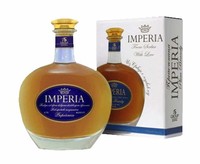
Slivovitz, a distilled fermented plum juice is the national drink of Serbia with 70 percent of domestic plum production being used to make it.

Data collected in 2002 showed the ethnic composition of Serbia thus: Serbs 82.86 percent, Hungarians 3.91 percent, Bosniaks 1.82 percent, Roma 1.44 percent, Yugoslavs 1.08 percent, and others (each less than 1 percent) 8.89 percent.

Serbian culture fell into decline during five centuries of rule under the Ottoman Empire.

The church has promoted Serbian nationalism, and has struggled against the dominance of the central authority of the Greek Orthodox Church in Constantinople.

The 1974 constitution, which made Tito president for life, produced a significantly less centralized federation, increasing the autonomy of Yugoslavia's republics as well as the autonomous provinces of Serbia.

The part of Serbia that is neither in Kosovo nor in Vojvodina is often called "Serbia proper."

Miroslav's Gospel is one of the earliest works of Serbian literature, dating from between 1180 and 1191, and one of the most important works of the medieval period.

Wealthier regions resented Serbia taking wealth they generated, and resented the use of federal power against republican autonomy.
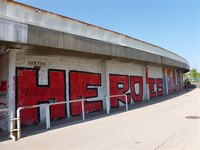
When Serbia was compelled to hold multiparty elections in December 1990, the League of Communists was renamed the Socialist Party of Serbia, and leader Miloљevic ensured that no opposition could emerge.

Serbian music dates from the medieval period, based on the Osmoglasnik a cycle of religious songs based on the resurrection and lasting for eight weeks.

Serbia has numerous theatres, including the Serbian National Theatre, which was established in 1861.

The former standard is known as Serbo-Croatian, now split into Serbian, Croatian and Bosnian standards.

Vuk Stefanovi? Karadћi? played a central role in the Serbian literary resurgence of the nineteenth century, by collecting folk songs and poems and publishing them in a book.

After Miloљevic was ousted in October 2000, the Democratic Opposition of Serbia coalition government embarked on a market reform program.







